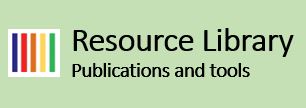Water and Land Management in the Central Rift Valley in Ethiopia & Landscape Approach Explained Using A Scale Model
*NOTE: Both presenters will show their video back to back during this session.*
Poster 1
Title: Water and Land Management in the Central Rift Valley in Ethiopia
Abstract:
Ethiopian Rift Valley lakes are part of the northernmost of the African Rift Valley Lakes system that extends from the Afar depression southwards to the Turkana depression on the Kenyan border. Located about 200 km south of Addis Ababa, the Ziway-Abijata-Shalla sub-basin critical for the survival of the local communities and migratory birds.
Ziway-Shalla sub basin (ZSSB) is part of the Rift Valley Lakes Basin (RVLB), cover an area of 14,477 km2 and consists four large lakes in the Rift Valley of Ethiopia, namely lakes Ziway, Langano, Abijata and Shalla. Surplus in lakes Ziway and Langano flows to Lake Abijata through Bulbula and Horakelo rivers, respectively. However, Lake Abijata gets most of its water from Lake Ziway.... Lake Ziway, in turn, gets most of its water from the River Meki and River Ketar catchments, both originate in the escarpments of the Rift, where most of the rain falls.
In the last two decades, the negative impact of human activities on the environment has reared its ugly face in most parts of the world. Ethiopia’s Central Rift Valley lakes have not been spared either. Three inter-connected lakes in particular – Ziway, Abijata and Langano – have perhaps bore the heaviest brunt...
Click here to view the full abstract.
Speaker(s):
- Leulseged Yirgu, Wetlands International
Time Slot: 14:15 - 14:30 CET
Language: English
Poster 2
Title: Landscape Approach Explained Using A Scale Model
Abstract:
Partners for Resilience Philippines, through CARE and ACCORD, are working with Malabon-Navotas-Tullahan-Tinajeros (MaNaTuTi’s) riverbasin stakeholders to help them do just that by mainstreaming integrated risk management (IRM) in local development plans. In support of this advocacy, PfR has constructed a scale model of the MaNaTuTi river system and its surrounding areas in order to visually represent IRM as applied to this landscape. The scale model will act as a visual explanatory tool to facilitate learning among the different stakeholders in MaNaTuTi and, in effect, strengthen the foundation for capacity building in IRM mainstreaming and help create a more enabling environment for building resilience.
This session aims to explain how community participation, landscape risk assessment, and facilitating dialogue between community and other levels of governance and agencies help in planning and policy-making that is inclusive and climate adaptive.
Speaker(s):
- Ma. Bernadette Uy, Media and Communications Coordinator for ACCORD
Time Slot: 14:15 - 14:30 CET
Language: English
Programmes
- Dialogue and Dissent Strengthening the capacity of civil society to engage in dialogues with stakeholders for improved disaster risk reduction policies, practices, and investments.
Read more - Up-scaling Eco-DRR Increasing communities resilience and reducing disaster risks through ecosystem-based solutions.
Read more





